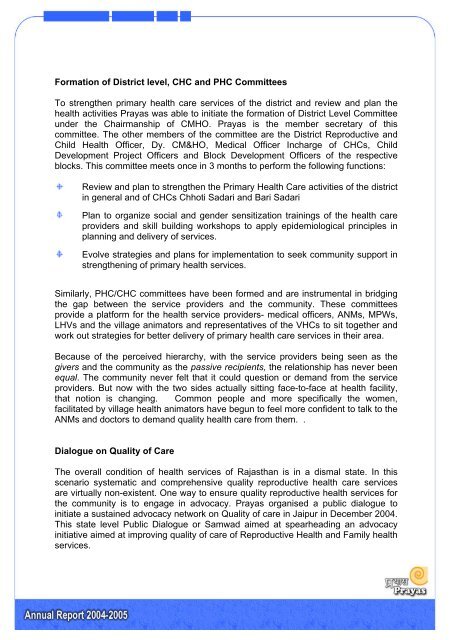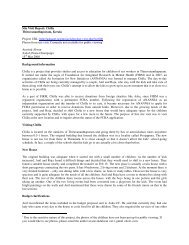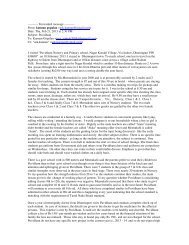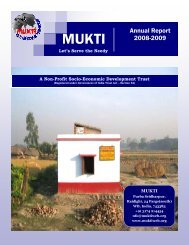Annual Report 2004-05 - Asha for Education
Annual Report 2004-05 - Asha for Education
Annual Report 2004-05 - Asha for Education
Create successful ePaper yourself
Turn your PDF publications into a flip-book with our unique Google optimized e-Paper software.
Formation of District level, CHC and PHC Committees<br />
To strengthen primary health care services of the district and review and plan the<br />
health activities Prayas was able to initiate the <strong>for</strong>mation of District Level Committee<br />
under the Chairmanship of CMHO. Prayas is the member secretary of this<br />
committee. The other members of the committee are the District Reproductive and<br />
Child Health Officer, Dy. CM&HO, Medical Officer Incharge of CHCs, Child<br />
Development Project Officers and Block Development Officers of the respective<br />
blocks. This committee meets once in 3 months to per<strong>for</strong>m the following functions:<br />
Review and plan to strengthen the Primary Health Care activities of the district<br />
in general and of CHCs Chhoti Sadari and Bari Sadari<br />
Plan to organize social and gender sensitization trainings of the health care<br />
providers and skill building workshops to apply epidemiological principles in<br />
planning and delivery of services.<br />
Evolve strategies and plans <strong>for</strong> implementation to seek community support in<br />
strengthening of primary health services.<br />
Similarly, PHC/CHC committees have been <strong>for</strong>med and are instrumental in bridging<br />
the gap between the service providers and the community. These committees<br />
provide a plat<strong>for</strong>m <strong>for</strong> the health service providers- medical officers, ANMs, MPWs,<br />
LHVs and the village animators and representatives of the VHCs to sit together and<br />
work out strategies <strong>for</strong> better delivery of primary health care services in their area.<br />
Because of the perceived hierarchy, with the service providers being seen as the<br />
givers and the community as the passive recipients, the relationship has never been<br />
equal. The community never felt that it could question or demand from the service<br />
providers. But now with the two sides actually sitting face-to-face at health facility,<br />
that notion is changing. Common people and more specifically the women,<br />
facilitated by village health animators have begun to feel more confident to talk to the<br />
ANMs and doctors to demand quality health care from them. .<br />
Dialogue on Quality of Care<br />
The overall condition of health services of Rajasthan is in a dismal state. In this<br />
scenario systematic and comprehensive quality reproductive health care services<br />
are virtually non-existent. One way to ensure quality reproductive health services <strong>for</strong><br />
the community is to engage in advocacy. Prayas organised a public dialogue to<br />
initiate a sustained advocacy network on Quality of care in Jaipur in December <strong>2004</strong>.<br />
This state level Public Dialogue or Samwad aimed at spearheading an advocacy<br />
initiative aimed at improving quality of care of Reproductive Health and Family health<br />
services.
















